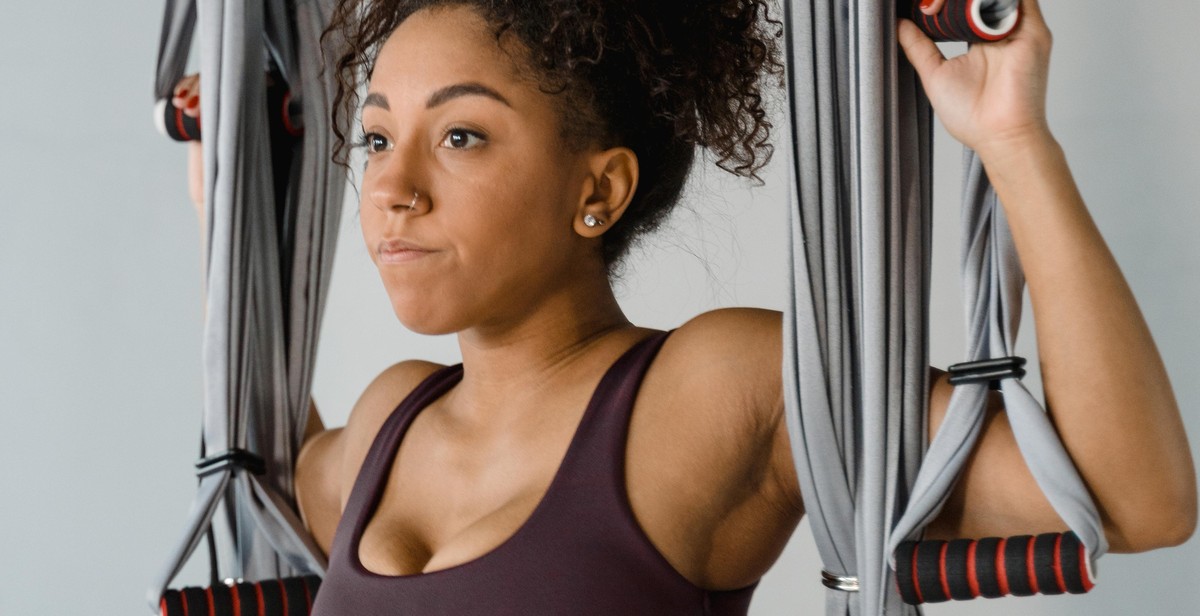Introduction: How to Improve Grip Strength with Forearm Exercises
Grip strength is an essential component of many physical activities, including weightlifting, rock climbing, and even day-to-day tasks like carrying groceries. However, many people neglect training their grip strength, leading to weaker grip and potential injuries.
Fortunately, improving grip strength is relatively simple with the right exercises. In this article, we will explore the best forearm exercises to improve grip strength and provide tips on how to incorporate them into your workout routine.
The Importance of Grip Strength
Grip strength is not just about lifting heavy weights or climbing mountains. It also plays a role in our daily lives, such as opening jars, gripping steering wheels, and holding onto objects. A strong grip can also prevent injuries by improving wrist stability and reducing the risk of accidents.
Research has also shown that grip strength is a reliable indicator of overall health. A study published in the Lancet Diabetes and Endocrinology found that grip strength was strongly associated with a lower risk of cardiovascular disease and all-cause mortality.
The Best Forearm Exercises for Grip Strength
There are numerous exercises that can improve grip strength, including wrist curls, farmer’s walks, and grip strengtheners. In this article, we will focus on the most effective forearm exercises for grip strength:
- Deadlifts
- Barbell and Dumbbell Holds
- Reverse Curls
- Plate Pinches
- Wrist Extensions
By incorporating these exercises into your workout routine, you can improve your grip strength and overall health. Let’s dive into each exercise and how to perform them correctly.
Why Grip Strength is Important
Grip strength is an essential aspect of physical fitness that is often overlooked. It refers to the amount of force that a person can generate through the muscles in their hands and forearms to hold onto or manipulate objects. While grip strength is critical for activities that require manual dexterity, such as playing musical instruments, it also has significant implications for overall health and wellness.
Improved Performance
Having a strong grip can enhance performance in a variety of physical activities, from weightlifting to rock climbing. When your grip strength is weak, you may struggle to lift heavy weights or maintain your grip on a climbing wall. By improving your grip strength, you can increase your overall physical capacity and achieve better results in your workouts and other physical pursuits.
Reduced Risk of Injury
Weak grip strength can also increase your risk of injury. When your grip is weak, you may be more likely to drop objects or lose your balance, leading to falls and other accidents. Additionally, a weak grip can cause compensatory movements in other parts of the body, leading to overuse injuries and other types of strain.
Improved Quality of Life
Grip strength is also linked to overall quality of life. Research has shown that individuals with stronger grip strength tend to have better cognitive function, higher levels of physical activity, and overall better health outcomes. By improving your grip strength, you can enhance your ability to perform everyday tasks and enjoy a higher quality of life.
In summary, grip strength is a critical component of physical fitness that has significant implications for overall health and wellness. By improving your grip strength through targeted forearm exercises, you can enhance your physical performance, reduce your risk of injury, and enjoy a higher quality of life.

Anatomy of the Forearm
The forearm is the part of the arm that extends from the elbow to the wrist. The forearm is made up of two bones: the radius and the ulna. The radius is located on the thumb side of the forearm, while the ulna is located on the pinky side of the forearm.
The forearm is divided into two compartments: the anterior compartment and the posterior compartment. The anterior compartment contains the flexor muscles, which are responsible for flexing the wrist and fingers. The posterior compartment contains the extensor muscles, which are responsible for extending the wrist and fingers.
Flexor Muscles
The flexor muscles are located in the anterior compartment of the forearm. These muscles are responsible for flexing the wrist and fingers. The flexor muscles include:
- Flexor carpi radialis
- Flexor carpi ulnaris
- Palmaris longus
- Flexor digitorum superficialis
- Flexor digitorum profundus
Extensor Muscles
The extensor muscles are located in the posterior compartment of the forearm. These muscles are responsible for extending the wrist and fingers. The extensor muscles include:
- Extensor carpi radialis longus
- Extensor carpi radialis brevis
- Extensor carpi ulnaris
- Extensor digitorum
- Extensor digiti minimi
Forearm Bones
The forearm is made up of two bones: the radius and the ulna. The radius is located on the thumb side of the forearm and is larger than the ulna. The ulna is located on the pinky side of the forearm and is longer than the radius. These bones work together to allow for the movement of the wrist and fingers.
| Bone | Location | Function |
|---|---|---|
| Radius | Thumb side of the forearm | Allows for rotation of the forearm |
| Ulna | Pinky side of the forearm | Provides stability to the forearm and helps with gripping |

Types of Grip Strength
Grip strength can be broken down into four main categories:
1. Crush Grip
The crush grip is the most common type of grip strength and is used when you close your hand around an object and squeeze it as hard as possible. This type of grip is essential for activities such as weightlifting, rock climbing, and gripping tools.
2. Pinch Grip
The pinch grip involves using your thumb and fingers to hold an object between them. This type of grip is important for activities such as carrying groceries, holding onto a steering wheel, and gripping small objects like pens or pencils.
3. Supporting Grip
The supporting grip is used when you hold an object for an extended period of time, such as carrying a heavy bag or holding a plank position. This type of grip requires endurance and is important for activities such as gymnastics, yoga, and martial arts.
4. Open Hand Grip
The open hand grip is used when you hold an object using your fingers and palm without wrapping your fingers around it. This type of grip is important for activities such as handstands, push-ups, and other bodyweight exercises that require a stable hand position.
By incorporating exercises that target each of these types of grip strength, you can improve your overall grip strength and enhance your performance in various activities.

Forearm Exercises to Improve Grip Strength
Strong forearms are essential for improving grip strength. Here are some effective forearm exercises to help you build stronger forearms and improve your grip strength:
1. Wrist Curls
Wrist curls are a classic exercise for building forearm strength. You can perform wrist curls with dumbbells or a barbell. Hold the weight in your hands with an underhand grip, and sit with your forearms resting on a bench or your knees. Slowly curl the weight up towards your forearm, then lower it back down. Repeat for several sets and reps.
2. Reverse Wrist Curls
Reverse wrist curls target the extensor muscles in your forearms. Hold the weight with an overhand grip this time, and perform the same movement as with wrist curls. Curl the weight up towards your forearm, then lower it back down. Repeat for several sets and reps.
3. Grip Strengthening Exercises with a Grip Strengthener
A grip strengthener is a small device that you squeeze to build grip strength. You can use it while watching TV or working at your desk. Squeeze the grip strengthener for several sets and reps to build forearm strength.
4. Farmer’s Walks
Farmer’s walks are a full-body exercise that also targets your forearms. Hold a heavy weight in each hand, and walk for a set distance or time. This exercise is great for building grip strength and endurance.
5. Dead Hangs
Dead hangs are a simple but effective exercise for building grip strength. Find a sturdy bar that can support your weight, and hang from it for as long as you can. This exercise is great for building grip strength and endurance.
By incorporating these forearm exercises into your workout routine, you’ll be able to build stronger forearms and improve your grip strength.
Incorporating Grip Strength Exercises into Your Workout Routine
Improving your grip strength can be accomplished with a variety of exercises that target the muscles in your forearms. These exercises can be incorporated into your regular workout routine to help you achieve your fitness goals.
1. Deadlifts
Deadlifts are a great way to build overall strength, including grip strength. As you lift the weight, your hands and forearms are forced to hold on tight and maintain a strong grip. When performing deadlifts, focus on keeping your grip tight throughout the entire movement.
2. Farmer’s Walks
Farmer’s walks involve walking while holding weighted objects in each hand. This exercise places a significant demand on your grip strength as you must hold onto the weights for an extended period of time. Start with lighter weights and gradually increase the weight as your grip strength improves.
3. Pull-Ups
Pull-ups are an excellent exercise for building upper body strength, including your grip strength. As you pull your body weight up, your hands and forearms are forced to hold onto the bar tightly. Focus on keeping your grip tight throughout the entire movement.
4. Grip Strength Training
In addition to incorporating grip strength exercises into your regular workout routine, you can also perform specific grip strength training exercises. These exercises include grip trainers, hand grippers, and wrist rollers. These tools are designed to specifically target your grip strength, helping you to improve your grip strength over time.
By incorporating grip strength exercises into your workout routine, you can improve your overall strength and achieve your fitness goals faster. Start with these exercises and gradually increase the weight and intensity as your grip strength improves.
Conclusion
In conclusion, grip strength is an important aspect of overall strength and fitness. It is essential for athletes, weightlifters, and even everyday individuals who want to improve their grip for everyday tasks such as carrying groceries. Forearm exercises are the best way to improve grip strength as they target the muscles responsible for gripping and holding objects.
The exercises mentioned in this article are effective in improving grip strength and can be easily incorporated into any workout routine. It is important to start with lighter weights and gradually increase the intensity to avoid injury. Additionally, proper form and technique are crucial to maximizing the benefits of these exercises.
Incorporating forearm exercises into your workout routine can also have other benefits such as improving wrist stability and reducing the risk of injury in activities that involve gripping and holding objects. It is important to remember that consistency and dedication are key to achieving results.
Overall, improving grip strength through forearm exercises is a simple yet effective way to enhance overall strength and fitness. By incorporating these exercises into your workout routine, you can achieve a stronger grip and enjoy the benefits of improved grip strength in everyday life.
